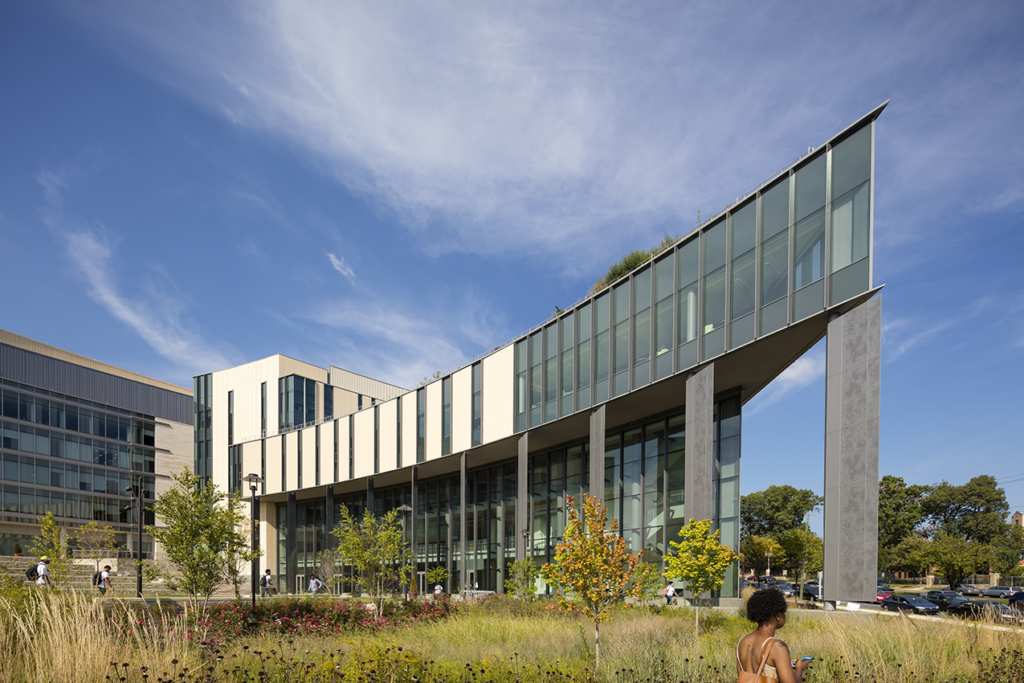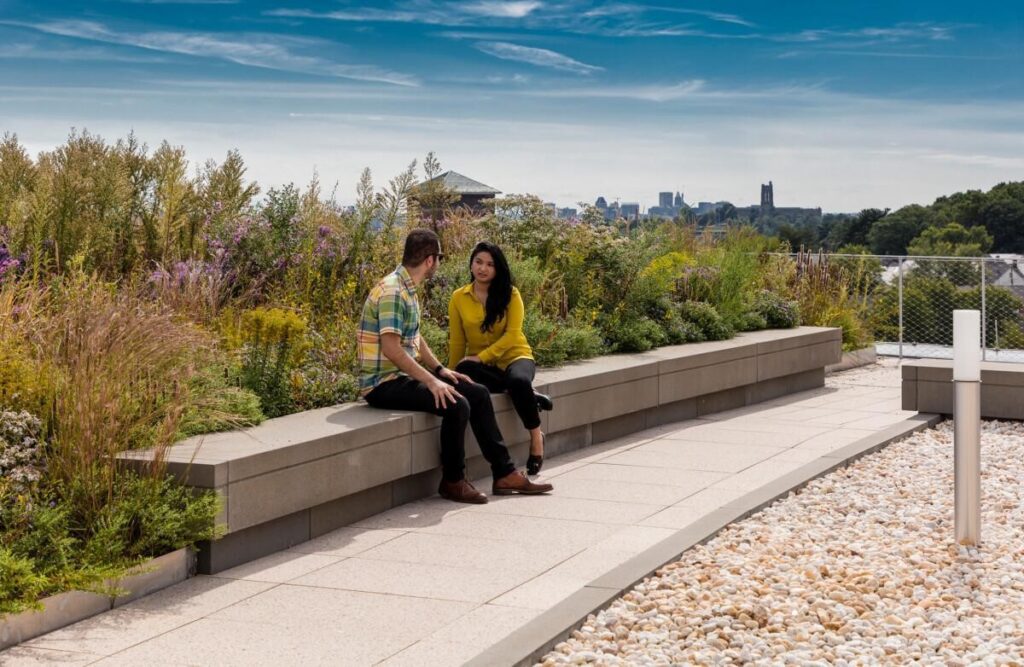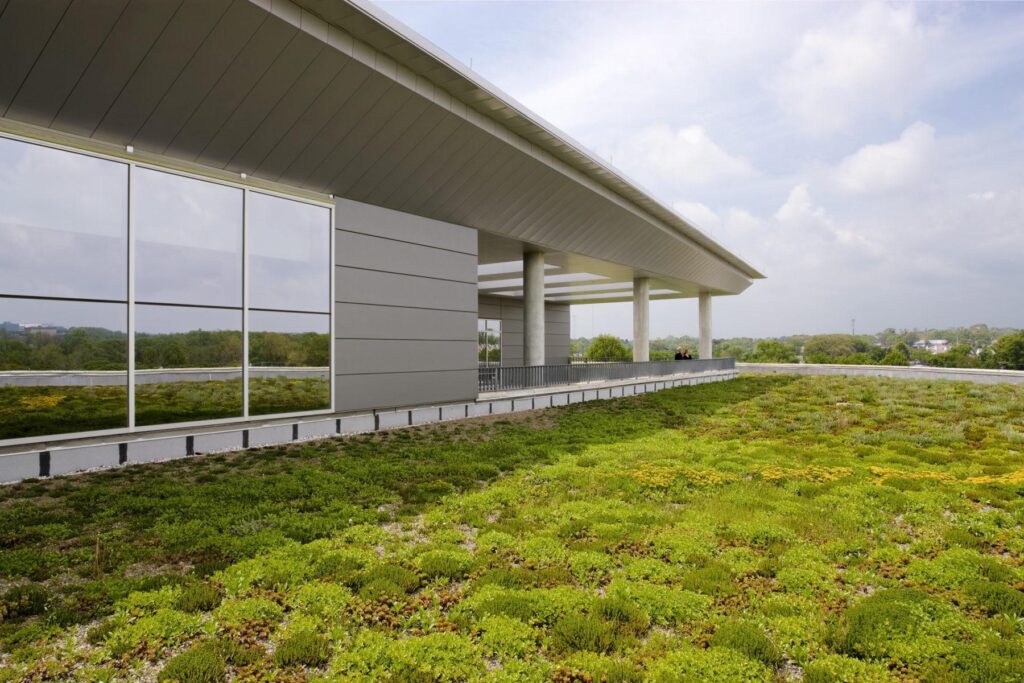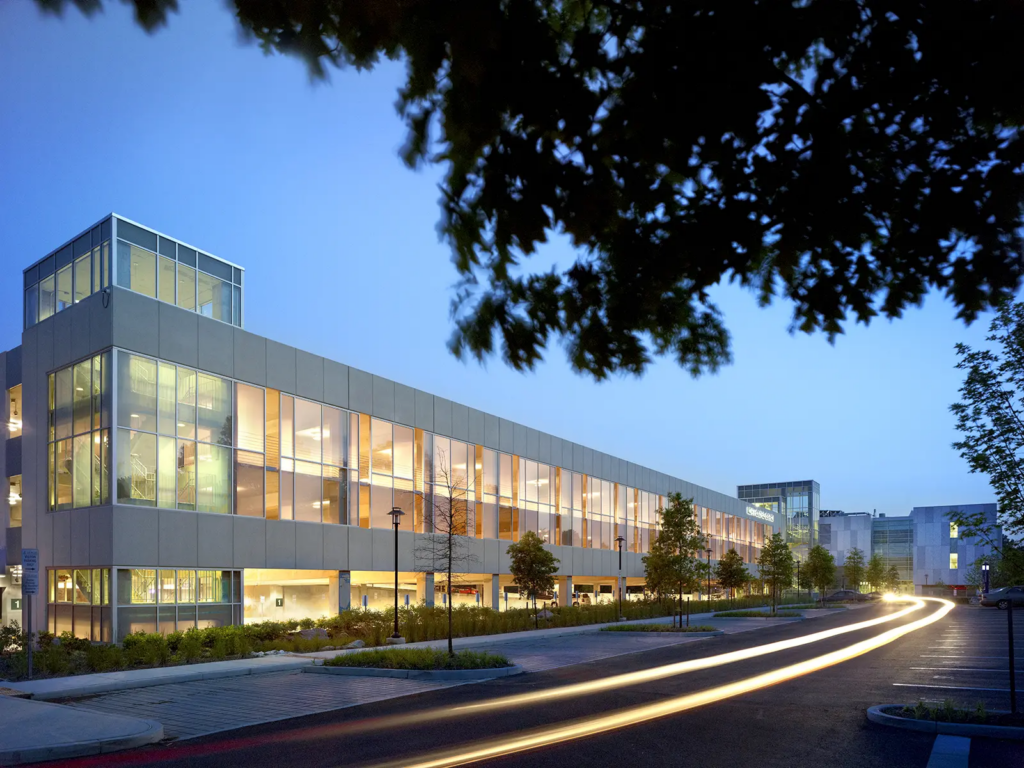Morgan State University (MSU) as an institution has been quick to adopt green practices to enhance its buildings and campus. However, many of those improvements remain hidden away from the average passerby. We would like to point out the green stormwater infrastructure you may not notice on a walk through our campus grounds.

Green Design Showcase: Green Roofs
The green roof is a standard feature for our newer buildings, demonstrating the versatility of this sustainable design. A green roof, or living roof, is partially or completely covered with vegetation planted over a waterproofing membrane, which helps absorb rainwater, reduce runoff, and filter pollutants. This sustainable approach improves water quality and offers numerous other environmental benefits, including insulation, reduced heat island effect, and increased biodiversity.
The Morgan Business Center replaces a 1970s-era facility; Architecturally, the triangular structure serves as a gateway to the campus and integrates with the surrounding environment, offering panoramic views. Now it is home to the largest of our green roofs. The tall brush and plant diversity make for a lovely rest stop for our business students.

Very visually different, but no less impactful, the green roof of the Earl S. Richardson Library at Morgan State University is a prominent green stormwater feature. Positioned atop a curvilinear wing, the lightweight, low-maintenance, and drought-tolerant sedum green roof offers practical benefits such as: insulation, stormwater management, and enhanced air quality while adding aesthetic appeal to an otherwise barren area. While unseen by most, the lucky few who have been to the top of these buildings find a relaxed environment to study between classes.

Green Design Showcase: Permeable Pavement
Permeable pavement is an innovative and sustainable solution for managing stormwater runoff while maintaining durable surfaces for vehicles and pedestrians. Unlike traditional pavement, which repels water, permeable pavement has a porous structure that allows rainwater to seep through to an underlying base layer. Permeable pavement comes in various forms, including porous asphalt, previous concrete, and interlocking pavers, offering flexibility in design and application.

At the Center for the Built Environment and Infrastructure Studies (CBEIS), permeable pavement is strategically integrated into the parking lot design, promoting sustainability and environmental stewardship on campus. By redirecting surface runoff to the bio-retention pond on the other side of the garage, the pavers help remove pollutants and contaminants from the water.
However, the use of permeable pavement extends beyond the CBEIS building. It is also employed in other strategic areas on campus, such as the pathway between the School of Global Journalism and Communication and the School of Engineering. This pathway connects two significant academic areas while facilitating effective stormwater management.
Green Design Showcase: Stormwater Pond
Stormwater ponds are specialized basins designed to manage and treat stormwater runoff by retaining a permanent pool of water. These ponds play a crucial role in stormwater management by capturing runoff from impervious surfaces such as roads and parking lots, allowing sediment and pollutants to settle. Morgan’s ponds are typically on the very edges of campus, between it and major water bodies that could be harmed by untreated runoff.
The Montebello Complex on our southern border has a critical pond between it and lake Montebello. It captures stormwater runoff from the surrounding area, stopping sediment and pollutants from contaminating the large natural feature. Another stormwater pond is located behind the parking garage at CBEIS. This pond serves a similar purpose, capturing and treating stormwater runoff from the CBEIS parking lot and adjacent areas. The goal is to protect the Herring Run Stream that runs alongside most of our campus and later feeds into the Chesapeake Bay. Protecting these features remains a present concern for our campus now and as we develop our campus further.
Conclusion
Hidden, but not forgotten, these practices are still doing their part to enhance the MSU experience. It is a subtle reminder that environmental protection is not always a flashy show. It is important to invest in features that reduce negative impacts, even if they go unseen.

